
All categories
Featured selections
Trade Assurance
Buyer Central
Help Center
Get the app
Become a supplier

(19 products available)












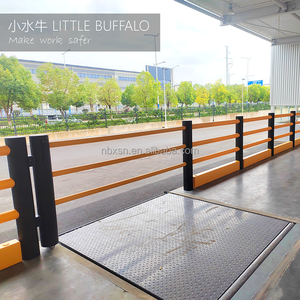
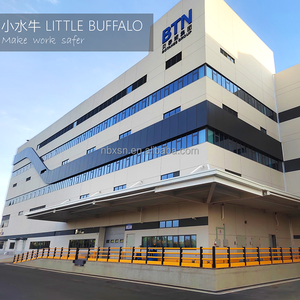
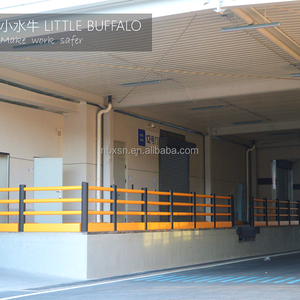
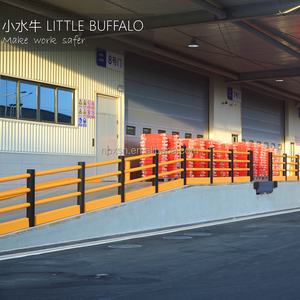
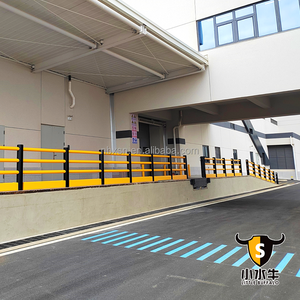
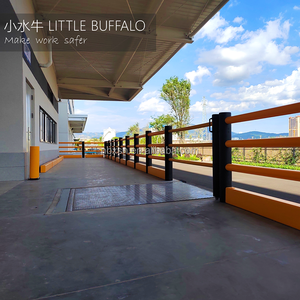




















There are various parking lot barriers for various safety threat levels that are usually incorporated in present-day parking lots.
These barriers work by lifting a barrier arm to enable car entry or exit. Automatic arm barriers operate with an intercom or a remote, while the manual ones are lifted by human efforts. Tilted barrier arms lessen the chances of an accident since cars cannot pass under a closed barrier arm. Arm barriers are meant for parking facilities that allow a periodic or fee-based entry of vehicles.
This barrier uses a balance of tension and compression spring to absorb impact and reduce rigidity in case of collision. The spinning cylinder is usually 360 degrees upon crash, thus minimizing damage. Due to the flexibility, these barriers are also called flexible barriers. This barrier should be placed in attack locations where the impact of vehicles is expected.
Boom barriers, also known as gate barriers, are horizontal barriers resembling a gate that can pivot into a vertical position to block vehicle passage. Many are often made with a sturdy long pole from steel or aluminum. These barriers are great for providing controlled entry and securing parking lots, residential areas, and restricted zones.
Rising bollards provide entry and exit control to vehicles and at the same time deny unauthorized access. These are vertical posts that rise up and down. It restricts vehicle entry but permits pedestrian flow when in a down position. Rising bollards can be automatic or manual and controlled by remotes, sensors, and push keys.
These are traffic control devices consisting of multiple sharp spikes arranged in a row on top of an inflatable rubber strip. They are effective at reducing or eliminating certain vehicle manipulations, such as illegal entry, evasion, and reckless driving. They allow vehicles to roll in only one direction while preventing any further motion in the opposite direction.
Different spiked strips are available for heavy-duty, permanent installation, and temporary or portable use. Temporary and portable strips are useful for events and inspections. Durable permanent strips are usually installed at the checkpoint to control traffic continually over a long period.
This is important to have an idea on what to consider in terms of features in a crash barrier.
Manual vs. automatic barriers have different installation processes. Below are the installations steps involved in the two types of barriers.
Automatic barriers installations are more complex because automation and power sources have to be fitted. Automated barriers utilize controllers, remote sensors, and inductive loops for automatic operation and vehicle detection. These components should be correctly placed to ensure the barriers function as intended. Components powered by electricity range from cables to connect to power sources, such as batteries and solar, for an environment-friendly setup. Sensors for vehicle detection also need proper placement and adjustment.
However, manual barriers are simple in installation since the barrier pole is fixed horizontally to a vertical post; the vertical post is fixed to the ground or concrete.
A three month less manual should just be referred to, and routine checks done on the barrier ensured. For automatic barriers, regular checks should be done on the connected systems and the remote sensors.
The smooth pole functioning is an indicator that the barrier is in good working condition. Cracks or bend checks reduce the functionality, and frequent lubrication lessens the wear and tear compared to heavy usage.
Cleaning of dust and other small particles reduces the chances of malfunctioning sensors. Also, after long installations, it is important to check all electric components and wires. Eco-friendly solutions, like washing with water and not using chemicals, should be adopted since they can damage typical barrier materials.
The materials used to make parking lot barriers determine their quality. Most are created with high-tensile steel, making them hard to bend or break. The unique design of concrete crash barriers also adds to its toughness and heavyweight. Concrete blocks are designed in a way to dissipate the kinetic energy of crashing elements. Aluminum barriers are lighter than steel ones but offer the same strength, if not more. Aluminum is preferred in building crash barriers since it does not rust.
Another major factor impacting barrier quality is the climate and geography of the area they will be used. For instance, sea-level areas with high humidity require barriers with corrosion-resistant materials like aluminum or galvanized steel. In High altitudes require barriers that can withstand significant winds and are thus sturdier.
Aside from materials, craftsmanship is critical in ensuring quality. Top manufacturers use welding methods to strengthen joints and seams and provide smooth finishing, which multiplies the barrier's strength and rigidity.
There are various testing methods of crash barriers that include the following:
Regularly checking for signs of wear and tear, rust, or physical damage is vital for maintaining crash barriers. Cleaning debris and contaminants, especially in automatic barriers, is important to ensure their sensors function well. Also, regular inspection of concrete barriers for visible cracks is paramount.
Like any other automotive accessory, crash barriers undergo certain standard tests for safety. Public safety is a priority. Barriers are divided into categories based on the kind of protection that needs to be achieved. These include the following:
Some barriers contain additional features, like breakaway sections, which reduce the impact by collapsing on themselves or the crashing vehicle's side, thus absorbing the impact.
A1. Use of weather-resistant materials such as aluminum or stainless steel, regular inspections, cleaning, repainting damaged areas, and prompt replacement of damaged parts can all improve park crash barriers' longevity.
A2. Spike strips are 100% effective in one direction in a motor vehicle, and they effectively puncture the tires against the opposite direction, thus making them very effective against illegal parking.
A3. The sensors are used to detect incoming vehicles and ensure the barrier operates smoothly without causing inconvenience to the driver.
A4. To determine the quality of crash barriers, materials used and craftsmanship should be looked at. Stainless steel, aluminum, and reinforced concrete are strong materials that offer greater durability. Furthermore, skilled workmanship guarantees that the barrier can endure exceptional impact forces.
A5. Smart parking barriers are equipped with high tech sensors, controllers, and communication capabilities to optimize vehicle access and enhance parking efficiency while providing real-time data monitoring.